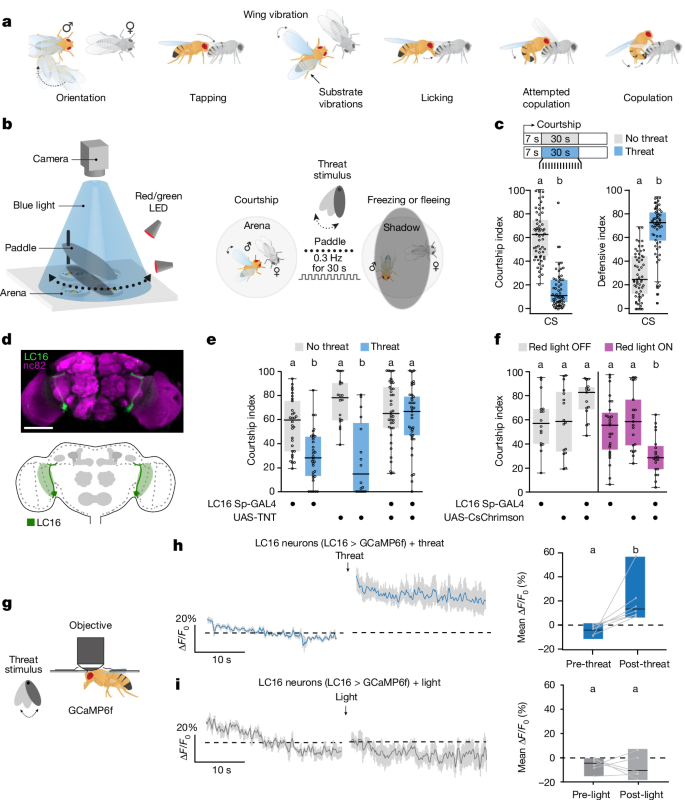2024-08-30 カロリンスカ研究所(KI)
<関連情報>
- https://news.ki.se/mechanisms-of-how-morphine-relieves-pain-mapped-out
- https://www.science.org/doi/10.1126/science.ado6593
機械的抗侵害受容を制御するモルヒネ応答性ニューロン Morphine-responsive neurons that regulate mechanical antinociception
Michael P. Fatt, Ming-Dong Zhang, Jussi Kupari, Müge Altınkök, […], and Patrik Ernfors
Science Published:30 Aug 2024
DOI:https://doi.org/10.1126/science.ado6593
Editor’s summary
It has been known for decades that a brainstem area called the rostral ventromedial medulla is important for opioid-induced analgesia, but the neural substrates underlying this phenomenon have remained elusive. Through the application of mouse genetics and the manipulation of neuron activity with engineered viruses, Fatt et al. discovered that a single type of excitatory neuron located in this brain region confers morphine antinociception (see the Perspective by De Preter and Heinricher). These neurons project to the spinal cord, where, through monosynaptic connectivity, they activate a defined inhibitory spinal neuron type that gates pain signaling in the ascending pain pathway. Inhibition of either the excitatory neurons in the rostral ventromedial medulla or the inhibitory neurons in the spinal cord was found to abolish all of the analgesic effects of systemically administered morphine. —Peter Stern
Structured Abstract
INTRODUCTION
Opioids have been used for medicinal and recreational purposes for millennia. They constitute a broad group of pain-relieving medicines, which includes morphine, that remain effective treatments for managing pain today. Opioids attach to opioid receptors in brain cells, not only blocking pain messages but also boosting feelings of pleasure. As a result, the use of opioids for pain relief has led to growing dependence, abuse, overdose, and death. Insight into the cells and neural pathways that provide pain relief is needed to explain how morphine can have such a powerful analgesic effect as well as how they differ from neurons and pathways eliciting feelings of euphoria, well-being, and addiction.
RATIONALE
Morphine can activate the µ-opioid receptor along the entire rostrocaudal extent of the pain pathway. One important region is the rostral ventromedial medulla (RVM), which is the last relay nucleus of a descending nerve pathway that collects information from several areas of the brain and modulates pain by increasing or decreasing incoming pain signaling in the spinal cord. Revisiting the role of the RVM in mice, we examined the identity of neurons responsive to systemic morphine, their role in morphine pain relief, and how these neurons interact with the pain pathway in the spinal cord to prevent incoming pain signaling as it is being relayed from the spinal cord to the brain.
RESULTS
We used several recent technological advances, including the dual activity–dependent approaches ArcTRAP and CANE, single-nucleus RNA sequencing, computational analyses, monosynaptic tracing, and behavioral assays of neuronal activity. We found that the RVM consists of multiple molecular types of γ-aminobutyric acid–mediated (GABAergic) neurons as well as a few types of glutamatergic and serotonergic neurons. Among these, morphine activated a select set of neurons, which together formed a “morphine ensemble.” Synthetic activation of the genetically captured morphine ensemble produced mechanical pain relief, mimicking the effects of morphine, and its inactivation completely abolished the effects of morphine on pain.
Among the neurons in the ensemble, glutamatergic neurons projecting to the spinal cord called RVMBDNF neurons (BDNF, brain-derived neurotrophic factor) were essential. Within the spinal cord, RVMBDNF neurons were connected to GABAergic inhibitory neurons expressing the neuropeptide galanin (SCGal neurons). Inhibition of SCGal neurons completely prevented pain inhibition after administration of morphine or synthetic activation of the RVMBDNF neurons. Notably, the neurotrophic factor BDNF produced within the RVMBDNF neurons was necessary for morphine to have any effect on the sensitivity to painful stimuli. Conversely, increasing BDNF expression in the RVMBDNF neurons markedly potentiated morphine’s effects, with efficacy at doses where morphine alone was insufficient.
CONCLUSION
We discovered that neural activity alone in the RVM induces the key features of morphine-induced mechanical pain relief, and when this activity is inhibited, morphine has little effect. Pain relief is mediated by glutamatergic RVMBDNF neurons projecting to inhibitory SCGal neurons, which attenuate incoming pain signaling in the spinal cord on the way to the brain. Within this circuit, BDNF is an essential component modulating neurotransmission. Finding the molecular identity of neurons that regulate morphine-induced mechanical antinociception advances the search for alternative therapeutic strategies to provide pain relief across various pain conditions.
Identification of neurons that regulate morphine antinociception.
(Top) Systemic injection of morphine increases “OFF” cell activity in the RVM. Sequencing reveals many cells with “OFF” cell activity as RVMBDNF neurons. (Middle) Sequencing spinal neurons activated by RVMBDNF neurons identifies SCGal neurons. (Bottom) Under normal physiology, RVMBDNF and SCGal neurons act to suppress ascending pain signals (yellow arrows). Inhibition of RVMBDNF neurons enhances, whereas morphine activation inhibits, these ascending signals. [Figure created with Biorender.com]
Abstract
Opioids are widely used, effective analgesics to manage severe acute and chronic pain, although they have recently come under scrutiny because of epidemic levels of abuse. While these compounds act on numerous central and peripheral pain pathways, the neuroanatomical substrate for opioid analgesia is not fully understood. By means of single-cell transcriptomics and manipulation of morphine-responsive neurons, we have identified an ensemble of neurons in the rostral ventromedial medulla (RVM) that regulates mechanical nociception in mice. Among these, forced activation or silencing of excitatory RVMBDNF projection neurons mimicked or completely reversed morphine-induced mechanical antinociception, respectively, via a brain-derived neurotrophic factor (BDNF)/tropomyosin receptor kinase B (TrkB)–dependent mechanism and activation of inhibitory spinal galanin-positive neurons. Our results reveal a specific RVM-spinal circuit that scales mechanical nociception whose function confers the antinociceptive properties of morphine.



